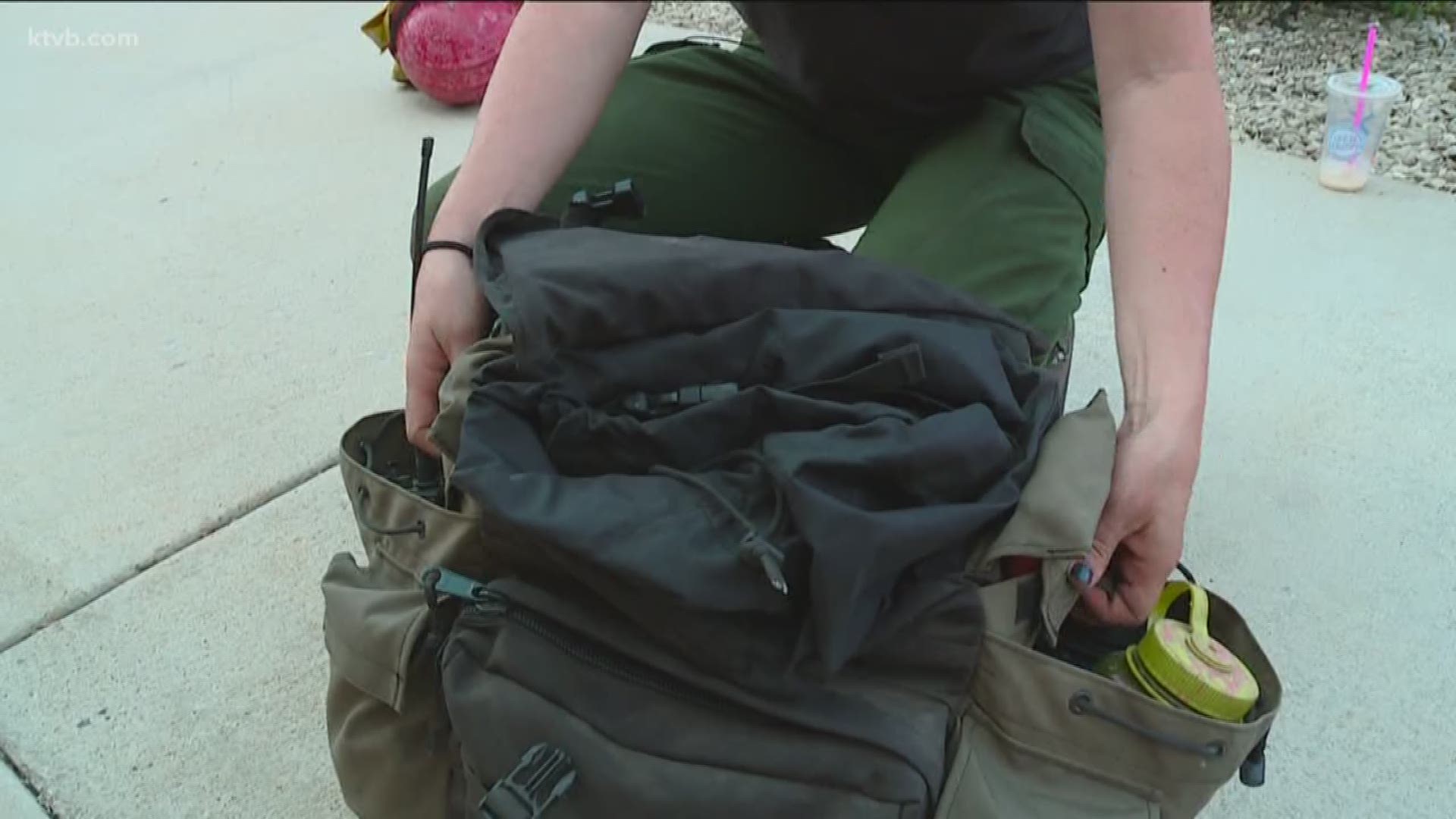BOISE — Women in wildland firefighting are pushing for diversity and inclusion in a field dominated by men.
They haven't had fire gear specifically designed for them - until now. A woman with the Boise District Bureau of Land Management felt it was time for that to change and spearheaded the effort to create uniforms and gear designed for ladies.
As you can imagine, wildland firefighting wasn't a career women were really involved in 50 years ago. But since then, it's been growing in popularity.
"There weren't a lot of women and it was uncomfortable for them. However, we've come a long way since then. Even though we don't have 50 percent women, 50 percent men on the fire line, women feel a lot more welcome now. But we still have a long way to go," National Interagency Fire Center spokesperson Jessica Gardetto said.
Gardetto said women only make up about 13 percent of the Bureau of Land Management - that's including both administrative and firefighting roles. Now, NIFC says agencies like the BLM and Forest Service are working to change that and increase diversity in fire crews.
"The fact that female-specific packs and female specific fire line clothing is coming out now, it's groundbreaking. I mean we've just been using standardized clothing for all these years so it's just one more step to make women feel more welcome on the fire line,” Gardetto told KTVB.
Agencies and women within those agencies are taking steps to make women feel more welcome - and more comfortable, which they say can make a difference on the fire line. Fire pants and backpacks are now designed to specifically fit women's bodies better, making the job of putting out wildfire a little easier. Female firefighters tell us even small changes like fire pants geared toward their body types really improve the situation.
"A lot of the difference is just where our straps are fitting. So they're going to fit better on our hips and then within the shoulders; men have broader shoulders so it's a lot harder, they're going to start sliding off the back. But also I feel like our torsos are shorter, we're a little bit smaller. So our packs are more condensed," Bureau of Land Management Range Technician Kelton McFadden said. "Just gives us a better feel when we're out on the line. We're digging, bending over a lot, up and down all the time... We can get more work done and not be wrestling with our packs."
“The more you can tailor this clothing and this gear you are going to have on you for 15 hours a day the easier your job is going to be in the long run,” Gardetto said.
Nationally - and here in Idaho - NIFC says women and agencies are trying to make the field more appealing, open and accepting to other women. Gardetto says they are upping their recruiting efforts toward women and do a lot of outreach to let women know wildland firefighting is a profession they can do if they enjoy being active and in the outdoors.
The effort to develop female-specific uniforms and gear throughout the wildland fire community was spearheaded by Boise District Bureau of Land Management Diversity Lead Keri Steneck.
“The next step is to develop a women’s specific yellow shirt. And, of course, those are the yellow shirts you see all firefighters wearing. The current yellow shirts - they work well - but if you are a woman you have a different type of body, sometimes they can be too long, they don't tuck into your pants well," Gardetto added.
These changes are all moves to make women feel more welcome and increase diversity in a historically male-dominated career.
“From my point of view the numbers of women on fire line have increased,” Gardetto added. "But that’s one thing we are still working on because we think it’s a job women enjoy doing, we think it’s a career they can have for their entire lives if they want."
Women bring different perspectives, handling of operations, and communication skills to firefighting on the fire line.
“The more diversity that we have, the more different skills we have, the better we are going to be able to put out that fire,” Gardetto said.

